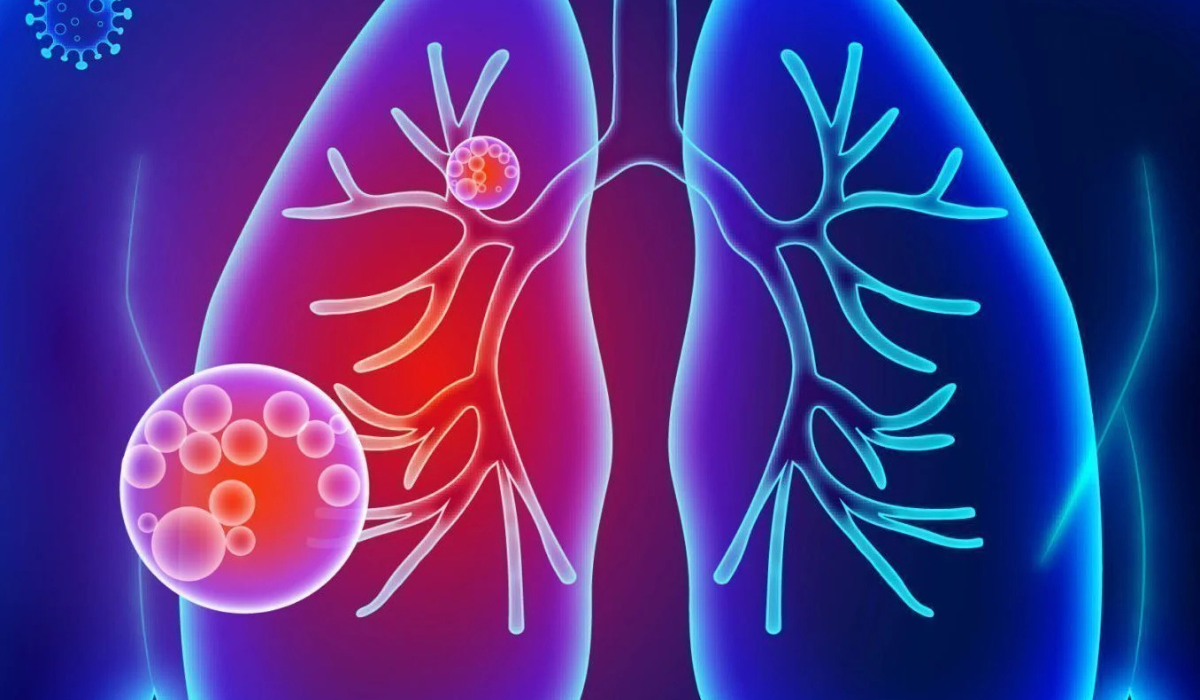Pulmonology
Pulmonology is a sub-specialty of Internal Medicine that deals with the health of the respiratory tract. In particular, the health of the lower airway, lungs and breathing control as well as their effect on the oxygenation of blood. Pulmonology is related to diagnosing and treating all diseases affecting the respiratory system that includes the nose, mouth, pharynx, larynx, trachea, bronchi, alveoli, lungs and the respiratory muscles.

Pulmonologists routinely diagnose and treat a wide spectrum of pulmonary disorders, including.

- Aspergillosis is an infection caused by a type of mold (fungus). The illnesses resulting from aspergillosis infection usually affect the respiratory system, but their signs and severity vary greatly. The mold that triggers the illnesses, aspergillus, is everywhere — indoors and outdoors.
- Addison's disease, also known as adrenal insufficiency, is a rare condition that arises when the body produces insufficient quantities of specific hormones. This disorder primarily results in reduced cortisol production and, frequently, decreased levels of another hormone, aldosterone.
- Asthma, a persistent lung condition that impacts individuals across all age groups, arises due to inflammation and constriction of the airways, leading to increased breathing difficulty. Indications encompass coughing, wheezing, breathlessness, and chest constriction. These manifestations may vary in intensity, and they can manifest intermittently.
- Sleep apnea, a potentially serious sleep disorder characterized by recurrent interruptions in breathing during sleep, may be the cause if you experience loud snoring and persistent fatigue despite a full night's rest.
- Sarcoidosis is a medical condition characterized by the formation of inflamed, red, and swollen lumps known as granulomas within various organs of the body, caused by abnormal cell groupings in the immune system.
- Lung cancer, a prevalent form of cancer, originates within the lungs. These vital respiratory organs, located in the chest, facilitate the intake of oxygen during inhalation and the expulsion of carbon dioxide during exhalation. Globally, lung cancer stands as the foremost contributor to cancer-related fatalities. Although individuals who smoke face the highest risk of developing lung cancer, it's important to note that this condition can also affect non-smokers. The likelihood of lung cancer rises in correlation with both the duration and quantity of cigarettes consumed. However, it's encouraging to know that by quitting smoking, even after many years of use, you can substantially diminish your risk of developing lung cancer.
- COVID-19, short for Coronavirus Disease 2019, is a highly contagious illness caused by the SARS-CoV-2 virus. The majority of individuals who contract this virus experience mild to moderate respiratory symptoms and can recover without the need for specialized medical care. Nevertheless, certain individuals may face severe illness and necessitate immediate medical intervention. Notably, older individuals and those with preexisting health conditions such as cardiovascular disease, diabetes, chronic respiratory issues, or cancer are at a higher risk of developing severe complications. It’s crucial to understand that COVID-19 does not discriminate by age, as anyone, regardless of age, can fall ill and potentially face severe consequences.
- Emphysema, a lung disease, adversely affects the alveoli within your respiratory system. The predominant manifestation of emphysema presents as breathlessness. On the other hand, chronic bronchitis, a pulmonary ailment, leads to the deterioration of the cilia in your air passages. Cilia, which are hair-like structures within cells, play a crucial role in expelling pathogens and other detritus from your airways.
- Asbestosis, often pronounced as as-bes-TOE-sis, stands as a persistent pulmonary condition triggered by the inhalation of asbestos fibers. Extensive and prolonged contact with these microscopic fibers can lead to the scarring of lung tissues and subsequent breathlessness. Symptoms of asbestosis, which may manifest anywhere from mildly to severely, typically remain latent for several years following the initial exposure.
- Interstitial Lung Disease (ILD) is a broad classification encompassing numerous conditions that result in pulmonary scarring, also known as fibrosis. This scarring process induces a loss of lung elasticity, leading to impaired respiratory function and reduced oxygenation of the bloodstream. Unfortunately, lung impairment resulting from ILDs is frequently permanent and progressively deteriorates with time.
- Pulmonary hypertension is a medical condition impacting the blood vessels within the lungs. This condition arises when the blood pressure within your pulmonary arteries exceeds the normal range. Approximately 1% of the global population is affected by pulmonary hypertension. Consequently, this condition necessitates increased cardiac effort to facilitate optimal blood flow into the lungs.
- Berylliosis, alternatively referred to as chronic beryllium disease (CBD), is a granulomatous condition resulting from beryllium exposure. CBD exhibits a diverse clinical progression, with prevalent symptoms encompassing cough, fever, night sweats, and fatigue.
- Pleural effusion is a medical condition marked by the abnormal accumulation of surplus fluid within the pleural cavity. This cavity serves as the intermediary space between the layers of the pleura, the membranous envelopment surrounding the lungs. The pleura plays a pivotal role in facilitating the expansion and contraction of the lungs during the breathing process, ensuring a smooth and frictionless movement.
- Acute severe asthma, referred to as an asthma exacerbation or attack, constitutes a medical emergency marked by the abrupt and pronounced deterioration of asthma symptoms. Asthma, a persistent respiratory ailment, induces inflammation and constriction of the airways, manifesting in symptoms like wheezing, breathlessness, coughing, and chest tightness.
- A sudden flare-up of symptoms in individuals with a pre-existing diagnosis of chronic obstructive pulmonary disease (COPD) is commonly known as an acute exacerbation. COPD, a persistent respiratory condition marked by restricted airflow, is frequently linked to factors such as smoking, environmental exposures, or genetic predisposition.
- Pulmonary embolism (PE) is a serious health issue marked by the abrupt obstruction of one or more pulmonary arteries within the lungs. This obstruction commonly results from blood clots journeying from the legs or other body regions, commonly referred to as deep vein thrombosis (DVT). Recognizing the potential life-threatening nature of PE, swift medical intervention is imperative. Learn more about this critical condition and the importance of timely medical attention.
- Coal workers’ pneumoconiosis (CWP), often referred to as “black lung disease,” develops when coal dust is inhaled. Prolonged exposure to this dust leads to lung scarring, resulting in a gradual reduction in respiratory function.
- Cystic fibrosis is a hereditary disorder that impacts various vital organs, including the lungs, digestive system, and more. This condition is the result of a faulty gene passed down through generations. Cystic fibrosis specifically affects the function of cells responsible for producing mucus, sweat, and digestive enzymes.
- Silicosis, a type of pulmonary fibrosis, is a lung condition caused by inhaling minuscule silica particles, a common mineral found in materials like sand, quartz, and various types of rock. Silicosis predominantly affects workers exposed to silica dust in occupations such as construction and mining.
- Pneumothorax is a medical ailment characterized by the infiltration of air into the region between the lung and the chest wall. This intrusion results in a partial or complete collapse of the impacted lung. Ordinarily, the chest cavity functions as an enclosed space, and the entry of air disturbs the usual pressure equilibrium necessary for the lungs to expand during the respiratory process.
- Tuberculosis (TB) is a highly contagious infectious disease primarily impacting the respiratory system, with its root cause being a specific strain of bacteria. Transmission occurs via airborne particles expelled when individuals infected with TB cough, sneeze, or even release saliva droplets into the environment. It’s crucial to note that tuberculosis is both preventable and treatable.
- Chronic Obstructive Pulmonary Disease, or COPD, stands as a persistent inflammatory lung ailment characterized by a restricted airflow from the lungs. Its hallmark symptoms encompass difficulties in breathing, persistent coughing, the production of mucus (known as sputum), and the presence of wheezing. Prolonged exposure to irritating gases or particulate matter, typically stemming from cigarette smoke, serves as the primary trigger for COPD. Those afflicted with this condition face an elevated risk of developing a range of health issues, including heart disease, lung cancer, and various other comorbidities.
- Hemothorax presents as a medical ailment marked by the buildup of blood within the pleural cavity, the area situated between the lung and the chest wall. Ordinarily containing a minimal amount of fluid, the pleural cavity serves to lubricate the lung and chest wall surfaces, facilitating seamless movement during the respiratory process.
- A sudden and severe deterioration of symptoms in individuals with pre-existing interstitial lung disease (ILD) is termed as an acute exacerbation. ILD comprises a range of lung disorders marked by inflammation and scarring of lung tissue, leading to increased difficulty in proper lung function.
- ARDS, an acronym for Acute Respiratory Distress Syndrome, denotes a critical and potentially fatal pulmonary ailment that may manifest in reaction to diverse injuries or illnesses. The hallmark of ARDS is the inflammation and heightened permeability of the pulmonary alveoli, the minuscule air sacs in the lungs. This results in the accumulation of fluid within the lungs, impairing their capacity to efficiently oxygenate the bloodstream and expel carbon dioxide.
- Lung malignancy denotes the existence of cancerous cells within the lungs. This form of cancer originates specifically in the lungs and can be broadly classified into two primary types: non-small cell lung cancer (NSCLC) and small cell lung cancer (SCLC).
- Bronchiectasis is a chronic respiratory condition characterized by the gradual widening of the airways in the lungs. This structural change can result in the accumulation of excessive mucus, which, in turn, increases the susceptibility of the lungs to infections. Among the prominent signs of bronchiectasis is the presence of a persistent cough, often accompanied by the expectoration of phlegm (sputum).
- Bronchitis is a medical condition characterized by inflammation of the bronchial tubes, the airways in the lungs. It leads to persistent coughing, frequently accompanied by the production of mucus. Bronchitis can manifest as acute (short-term) or chronic (long-term) in nature. Acute bronchitis, a prevalent occurrence, typically stems from an infection and may have contagious qualities.
